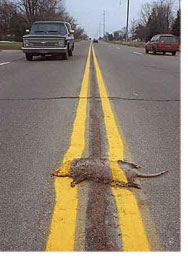
dan mcquillan's List: social media campaigning IS71055A - lecture 5 - social business
-
-
The concept of "Web 2.0" began with a conference brainstorming session between O'Reilly and MediaLive International. Dale Dougherty, web pioneer and O'Reilly VP, noted that far from having "crashed", the web was more important than ever, with exciting new applications and sites popping up with surprising regularity. What's more, the companies that had survived the collapse seemed to have some things in common. Could it be that the dot-com collapse marked some kind of turning point for the web, such that a call to action such as "Web 2.0" might make sense?
-
In our initial brainstorming, we formulated our sense of Web 2.0 by example:
Web 1.0 Web 2.0 DoubleClick --> Google AdSense Ofoto --> Flickr Akamai --> BitTorrent
-
-
-
A powerful global conversation has begun. Through the Internet, people are discovering and inventing new ways to share relevant knowledge with blinding speed. As a direct result, markets are getting smarter—and getting smarter faster than most companies.
-
Whether explaining or complaining, joking or serious, the human voice is unmistakably genuine. It can't be faked.

Most corporations, on the other hand, only know how to talk in the soothing, humorless monotone of the mission statement, marketing brochure, and your-call-is-important-to-us busy signal.
-
-
-
-
-
I urge you to read and listen to whatever you can find of Dan McQuillan‘s work. Dan is a sociologist, who recently set up the MA in Creating Social Media at Goldsmiths.
Dan talks about the NHS as an organisation that is so big, that sometimes bits of it seize up. The hierarchy is so ingrained people don’t have options – they literally can’t do anything because they are locked down with policies and systems, designed with the best intentions, but that have ceased to be useful. The role of digital tools, Dan says, is to help loosen up these structures, create new ways of doing things, new habits.
There’s a video and notes about Dan and some thoughts of my own about networks and hierarchies in a blog post I wrote earlier this year
-
Assemblages
One way of understanding that networks and hierarchies have to co-exist is to look at a sociological idea called “assemblages” – ad hoc collaborations between formal, hierarchical organisations and loose networks.
This diagram – and again it was Dan that introduced this idea to me - represents the assemblage that was put in place around the Haiti disaster. Learning the lessons from Katrina, the Red Cross and the US Navy connected with ad hoc networks using tools like Ushahidi to help them coordinate the relief effort.
-
-
-
All Organizations Are Social, But Few Are Social Organizations
-
Organizations work top down through social interactions structured around the organization chart, or hierarchy. And they work end to end structured around their business processes. These two dimensions — hierarchy and process — shape the way organizations see the world, its challenges and, more importantly, the portfolio of potential solutions to those challenges.
-
-
-
- There is no such thing as a social media strategy.
- There are only business strategies that understand networks.
-
-
-
“Works in Practice – But Not in Theory”
-
-
-
-
-
In the words of Rufus Pollock, co-founder of the Open Knowledge Foundation, ‘the best thing to do with your data will be thought of by someone else’1.
-
However, Roland Harwood, co-founder of the NESTA spin-off 100% Open, emphasizes that there are in fact at least two ways in which organizations can open up their innovation processes. Roland distinguishes between so-called ‘discover’ and ‘jam’ open innovation approaches.
-
-
-
All that focus being put on Big Data is all good and well, but ITDMs would be better off focusing on Open Data if they want to increase organisational value.
-
According to research firm Gartner, an Open Data strategy should be a top priority for any organisation that uses the Web as a channel for delivering services.
-
-
